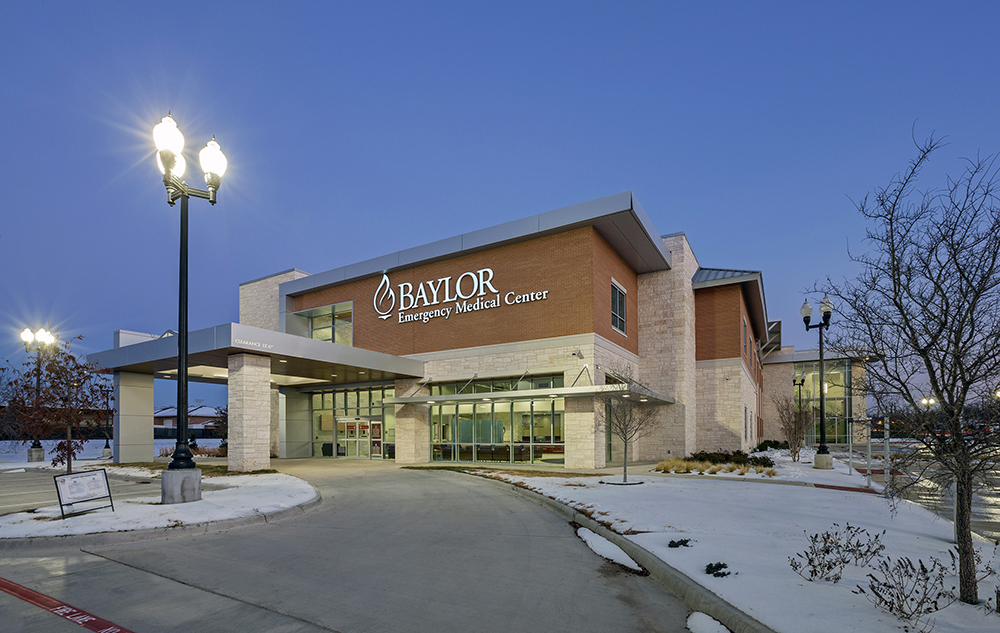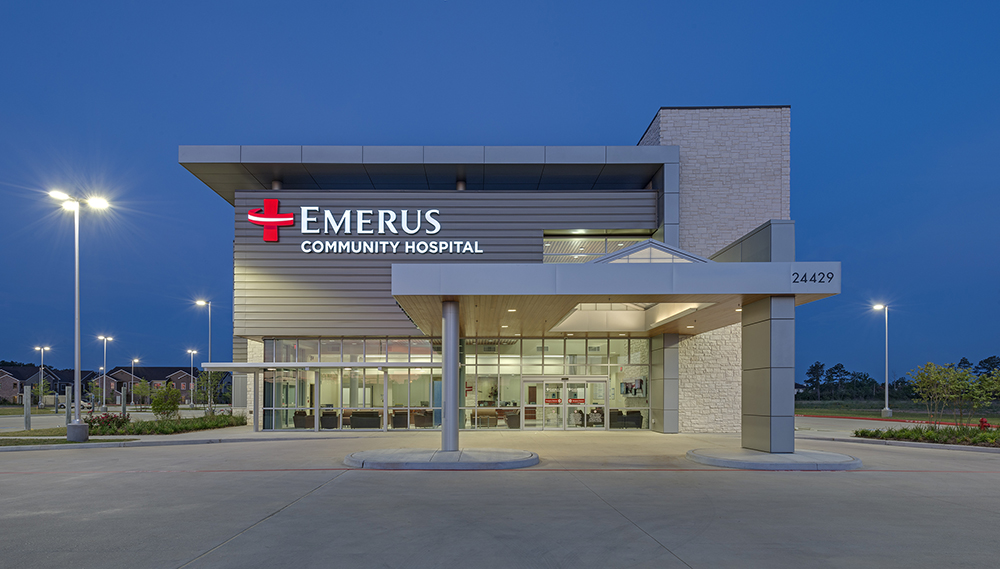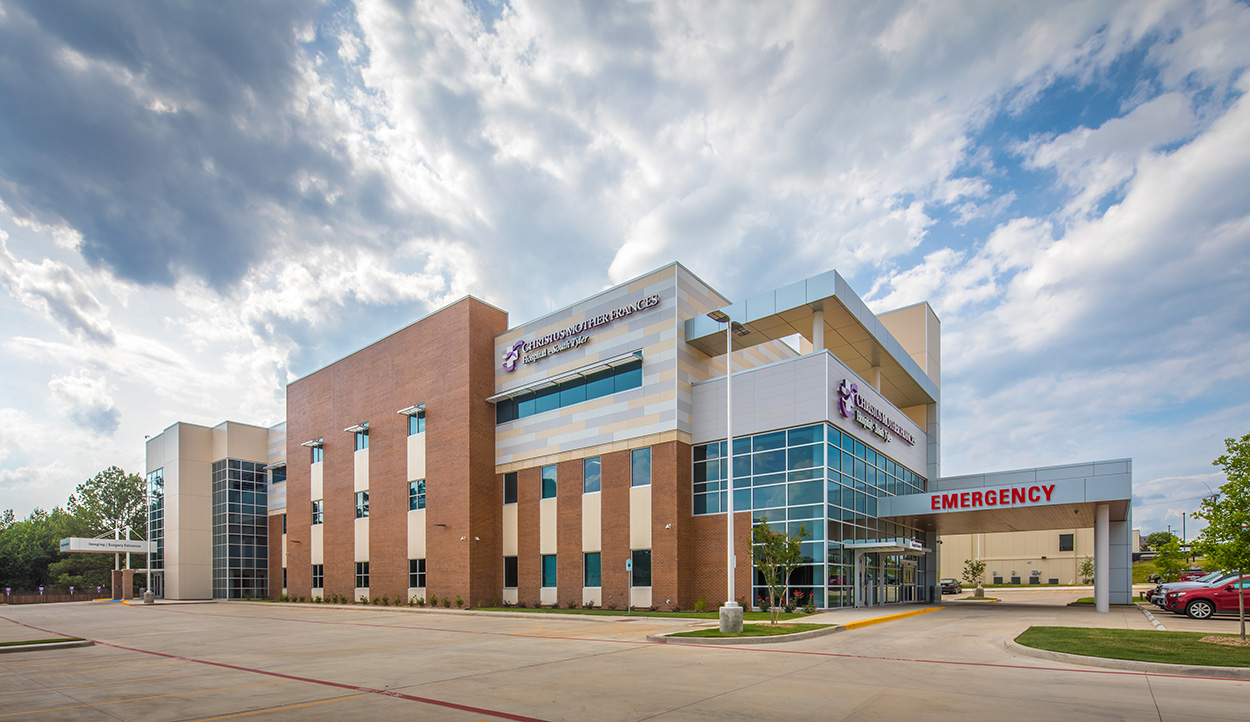What’s Behind the Micro-Hospital Buzz?
By Kevin A. TenBrook, AIA
Those who follow trends in healthcare design might have noticed the seemingly recent emergence of so-called “micro-hospitals.” Micro-hospitals may be a new term, but the idea of a small hospital is not new at all. So today, what is specifically new that has earned all this attention? To understand, we need to go back in time a little.
At PhiloWilke, we have been designing small hospitals in Texas since the firm was founded in 1985. These early hospitals generally specialized in outpatient and limited inpatient surgical services, and were themselves an evolution of the free-standing ambulatory surgery center (ASC), which was still in its infancy. According to the Ambulatory Surgery Center Association (http://www.ascassociation.org), the very first ASC in the United States opened in Phoenix in 1970. By 1979, there were around 100 ASCs in the entire United States, but it wasn’t until 1982 that CMS/Medicare finally began approving payments to ASCs. In 1983, when I worked on my first ASC with Dana Wilke (before the founding of PhiloWilke), ambulatory surgery centers were still a very new concept in Texas. 35 years later, that first ASC is still in operation.
The first small hospital we designed at PhiloWilke was started in 1996, and as a healthcare delivery concept, it was quite new. It had just six inpatient rooms and a full surgery suite of six operating rooms. The number of operating rooms was designed to be eventually expanded to eight (which happened in 2000). The idea for the facility, pioneered by the surgeons-owners, was to start with the skeleton of an ASC, and add limited inpatient care and imaging services to enable more complex procedures that might require an overnight stay to be performed there. Of course, to add inpatient care of any type meant complying with the rigorous facility requirements of a full blown, large hospital. As when ASCs first emerged, the regulations just weren’t ready. And to some extent, they still aren’t completely ready today
That first facility, Cornerstone Regional Hospital in Edinburg, Texas (www.cornerstoneregional.com) was 27,000 square feet in area, and was designed to specialize in providing surgical services, especially orthopedic surgery. It was just the third such small surgical hospital in Texas. PhiloWilke would go on to design several more “small” specialty hospitals during the 1990’s and early 2000’s that were similar in character and specialization. One key attribute of these small surgical hospitals was that they had minimal emergency rooms. They were not designed to be destination facilities for people seeking emergency treatment.
So, what’s new now? How are these “new” micro-hospitals different than the small surgical specialty hospitals of the last twenty years? The fundamental difference is that micro-hospitals have evolved from a different healthcare delivery concept. Small surgical hospitals evolved from the new concept of ASCs. In contrast, the micro-hospitals of today are evolving out of the still new concept of free-standing emergency centers (FSEC), which only first started appearing on the scene in the United States in the early 2000’s.
Initially, most, if not all FSECs were associated with hospitals, and so are more properly called Free Standing Emergency Departments (FSED). There are many acronyms out there, but I’ll stick with FSED and FSEC for simplicity. The FSED was a way for a large hospital system to extend its services into a community and provide better patient access and care.
Hospital emergency rooms had been, and still are, chronically overloaded. The emergency room visit is rightly dreaded by every patient, with long wait times, confusing wayfinding, over-burdensome rules, limited access to overworked physicians, and so on. Over time, FSECs arrived, independent of large hospitals. Like ASCs before them, they were often founded by physicians seeking a better healthcare delivery vehicle, and/or ownership and control of that delivery.
Regulation had yet to catch up, and the level of services available at an FSEC varied wildly. They could be very comprehensive, like a regular hospital emergency room, or very limited, as in a small clinic. FSEDs on the other hand, fell under hospital regulations provided the hospital received Medicare/Medicaid payments. The regulators are starting to catch up with FSECs, but only slowly. Today there are minimal or no regulatory frameworks for FSECs in most of the country. It wasn’t until 2010 that regulations for FSECs were first adopted in Texas, one of the first states in the nation to do so.
Even early on, some pioneering emergency room physicians were thinking beyond the limited emergency room services that could be delivered by the loosely regulated FSEC. What if instead, a fully licensed hospital was built around the skeleton of the emergency room, just as the small surgical hospital was built around the skeleton of the ASC?
PhiloWilke was fortunate to meet such a group of forward thinking emergency room physicians in 2007. They asked us, “What would it take to expand our facility to meet the licensing regulations for an acute care or specialty hospital?” By doing so, they could expand the services offered in their FSEC beyond what could be offered without any inpatient care at all. Also, at the time, FSECs were unregulated in Texas. By voluntarily expanding their facility to fall under the hospital regulations, they could level the field with FSEDs, charging the same rates, and provide even more comprehensive care than the typical FSED.
It was not just the patients that benefit from the micro-hospital concept. These doctors recognized many problems and frustrations that healthcare staff and physicians experience when working in the large hospital environment. Providing care in the smaller environment reminded many of why they chose to become doctors, nurses, and healthcare technicians to begin with. I was particularly impressed by this video showing how doctors practicing in a micro-hospital enjoyed their new patient-focused experience and thus found their jobs more rewarding: https://youtu.be/lynzNY4CZu4
That group of physicians founded the company Emerus, now the largest operator of micro-hospitals in the United States. Emerus currently has 20 micro-hospitals operating, with plans to have 50 facilities open by 2019. PhiloWilke has been their design partner since the beginning, designing all but one of those facilities. Engineering News Record recently estimated that there are currently only about 50 micro-hospitals operating nationwide. PhiloWilke has designed almost half of them. I am very proud of that record.
Like the ASCs, FSECs, and small surgical hospitals before them, the development of the micro-hospital has happened faster than regulations have been created. Fitting the operational program of a micro-hospital into the regulatory framework designed for the large hospital is therefore quite challenging. For the micro-hospital to make sense, and deliver on its promise of faster access to care, increased time with physicians, more convenient locations, and improved patient experience, the design of the facility must employ shared spaces, and eliminate redundant or unnecessary ones. Spaces that are only in the regulatory requirements because the regulation envisions large distances between functions that don’t exist in the micro-hospital world, must be removed. Convincing regulators that all the functional requirements have been met with a smaller alternate design is often very difficult. But this is exactly the challenge that Emerus, and PhiloWilke as their architect, have taken on and achieved very successfully in multiple jurisdictions in the last ten years.
As you can see, although the idea of a small hospital is not new, in the context of where they came from, their history, and the focus of healthcare they deliver, micro-hospitals really are a new concept. Even large hospital systems are now very interested in learning how to use this concept to extend their reach into their communities to provide more convenient access and a better patient experience. They see that this concept enables them to offer more services to more geographically dispersed patients at a much lower cost than is possible with large hospital facilities. In these times of uncertain national healthcare priorities, having the micro-hospital model as a design option can reduce healthcare infrastructure costs and provide better care. We are still at the beginning of the trend, and I think we will see micro-hospitals become an increasingly important and common facility option.




